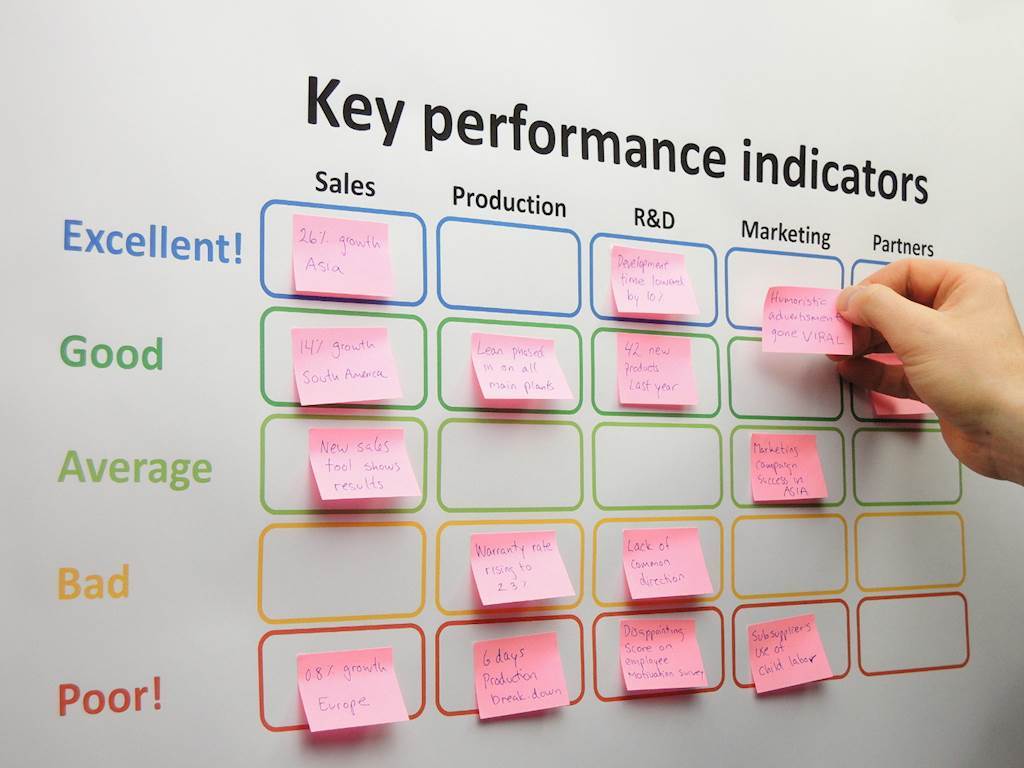They are used throughout all levels of a company to evaluate each level’s performance and success at hitting objectives. KPIs are structured in an umbrella format that measures both the overall long term goals of the company, with sub-measures tracking shorter term everyday goals.
KPIs are essentially the way a company communicates its goals, purpose and objectives to its staff, and like all forms of communication; if it isn’t clear, wires can get crossed and confusion can arise.
This is detrimental to the successful execution of objectives by staff and as such, KPIs need to be clearly thought out and well structured so that everybody knows exactly what is expected of them. So how do you set up a perfect KPI? Read on to find out:
- The key characteristics of a successful KPI
- Useful tips to consider
- How to be SMART
Keep it simple
A key component of a successful KPI is its simplicity. It needs to be easily comprehended and easily measurable, for example a KPI can be as simple as asking ‘how many clients did we gain this month’ or ‘how many units have we sold this week’. Business analytics expert Jay Liebowitz says that an effective KPI is one that ‘prompts decisions, not additional questions’.
All members involved with a goal should know precisely how to effect a KPI. When employees are clear on their objectives it allows them to be proactive in making decisions to influence outcomes. Further to guiding staff in their operations, a good KPI will allow you to gather measurable data on how well a campaign is progressing. This measure doesn’t need to only be quantitative; it can be qualitative such as ‘how engaged are employees with their work’. This can be achieved via surveys or customizable forms and is an effective way in seeing how positively or negatively a project is being executed.
It should be well aligned
According to a Data Warehousing Institute metrics report effective KPIs ‘cascade from… strategic dashboards to tactical and operational dashboards’. This means that the daily operational and strategic goal KPIs should align with the overall objective KPI of the business strategy. For example, while some businesses may be orientated around acquiring new clients, others such as a customer service company would have customer retention at its core. To this end, it’s important to consider the overall objectives to ensure that KPIs are always aiding the umbrella goals of the organization.
This isn’t always easy to achieve as there can be any number of dashboards across numerous departments, which is where the concept of cascading comes in. For example, a CEO will typically have one dashboard, while his or her direct reports will have two, and mid-level management will have three or more. Top level KPI’s cascade throughout an organization and the data captured by lower level KPIs roll up to the corporate-wide KPIs. Cascading can be vertical or horizontal and can become quite complex. A comprehensive explanation can be found here.
Always remember to be SMART
Using the SMART criteria can help you keep on top of your KPIs and ensure that they are fit for purpose, relevant and successful:
Specific – is your objective specific?
Measure – can you measure progress towards that goal?
Attainable – is the goal realistically achievable?
Relevant – how relevant is the goal to your organization?
Time-frame – what is the time-frame for achieving this goal?
There are variations of SMART depending on the author. In some cases Attainable is replaced with Assignment – who will be in charge of the goal?
SMART can be adapted to suit the needs and context of the objective. The criteria are commonly attributed to Peter Drucker’s management by objectives concept. George T Doran, author of There's a SMART Way to Write Management's Goals and Objectives summed up SMART succinctly:
By utilizing all key elements of your KPI and understanding its purpose and value, key objectives can be monitored and met more effectively. Remember to be SMART, concise and visible across the business to achieve success.
Access the latest business knowledge in Management
Get Access








Comments
Join the conversation...